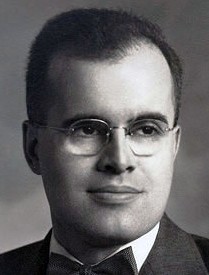-
(b.) -1920 April 19(d.)2008 August 02
Bio/Description
A University of Chicago meteorologist, he pioneered the field of storm-surge forecasting. Early in his career, he helped formulate the first weather forecast by computer, which was carried out in 1950 on the Electronic Numerical Integrator and Computer (ENIAC), in Aberdeen, Md. At the time, he was working as a consultant to the Meteorology group of the Electronic Computer Project at the Institute for Advanced Study in Princeton, N.J. He also used computers to study the storm surge caused by Hurricane Carla, which struck the Texas coast in September 1961. When large-scale computers became available at the University of Chicago in 1963, his research consumed a large percentage of their processing time. His later work dealt with natural oscillations of the world ocean, and with oceanic and atmospheric tides. He was Professor Emeritus in Geophysical Sciences at the University, specializing in dynamical meteorology and oceanography, including investigations of numerical weather prediction and storm surges. He became interested in storm surges when a 6-foot surge hit Chicago's Montrose Harbor on June 26, 1954, with fatal results. High winds blowing over expansive bodies of water cause storm surges. Born April 19, 1920, in Chicago, he received a bachelor's degree in mathematics and physics from the University of Chicago in 1940, and a master's degree in mathematics and physics from the University of Arizona in 1941. After the United States entered World War II, he studied meteorology at the University of Chicago, where he taught the subject to Air Corps cadets in 1943 and 1944. He then worked for the U.S. Corps of Engineers' Portland, Ore., District, estimating the maximum possible precipitation in the Willamette River basin for spillway design. He married Harriet M. Herschberger Platzman on Nov. 30, 1945. He earned his Ph.D. in meteorology from the University of Chicago in 1947, and in 1948, he joined the faculty of the University's Meteorology Department. That department merged with the Geology Department in 1961 to form the Department of Geophysical Sciences, of which he served as chairman from 1971 to 1974. A resident of Chicago's Hyde Park neighborhood, he retired as Professor Emeritus in 1990. He received appointments as a visiting scientist to the National Center for Atmospheric Research in Boulder, Colo., at intervals from 1963 to 1983. As a Guggenheim Fellow at Imperial College London, in 1967-68, he conducted research on wind dynamics in the ocean and atmosphere. His honors included elected fellowships to the American Geophysical Union, the American Meteorological Society and the American Association for the Advancement of Sciences. He conducted an interview with Jule Charney-another prominent meteorologist of his generation, which appeared in the American Meteorological Society's monograph, ?The Atmosphere-A Challenge? and brings out a first-hand view of the dawn of modern meteorology." In ?Turing?s Cathedral? by George Dyson it is noted, ?In March of 1950 Charney was joined by George Platzman, Ragnar Fj?rtoft, John Freeman, and Joseph Smagorinsky on an expedition to Aberdeen. They were guided by Kl?ri Von Neumann, who helped code their problem and initiated them into the ways of the ENIAC and its peripheral card-processing machines.?
-
Date of Birth:
1920 April 19 -
Date of Death:
2008 August 02 -
Gender:
Male -
Noted For:
One of the founders of modern meteorology who transformed weather forecasting from qualitative guesswork to quantitative science; in that he helped formulate the first weather forecast by computer, which was carried out in 1950 on the Electronic Numerical Integrator and Computer (ENIAC) -
Category of Achievement:
-
More Info:


